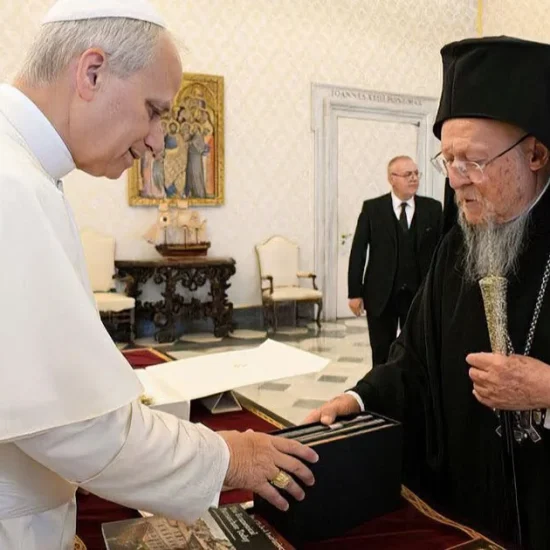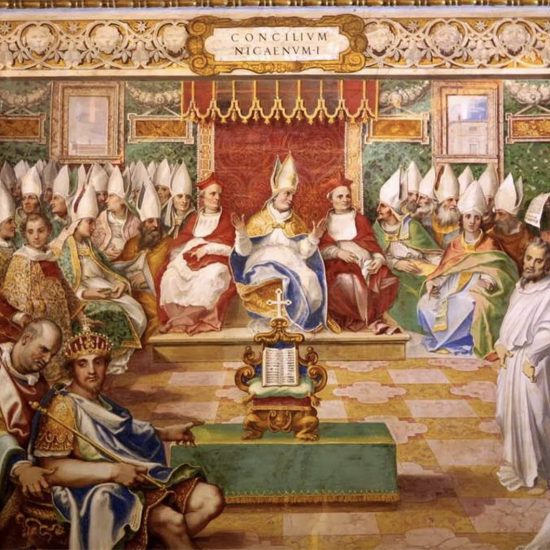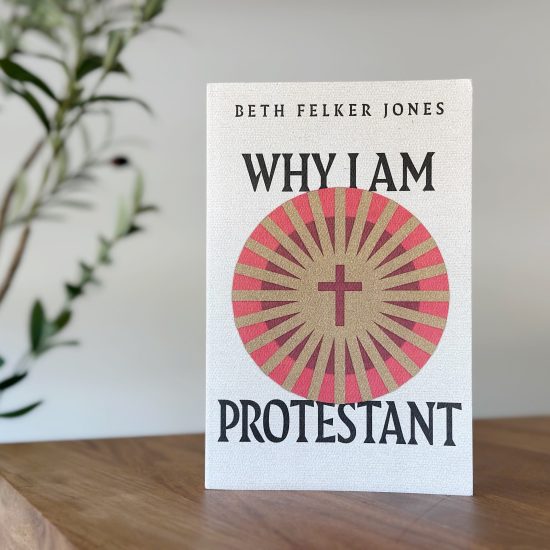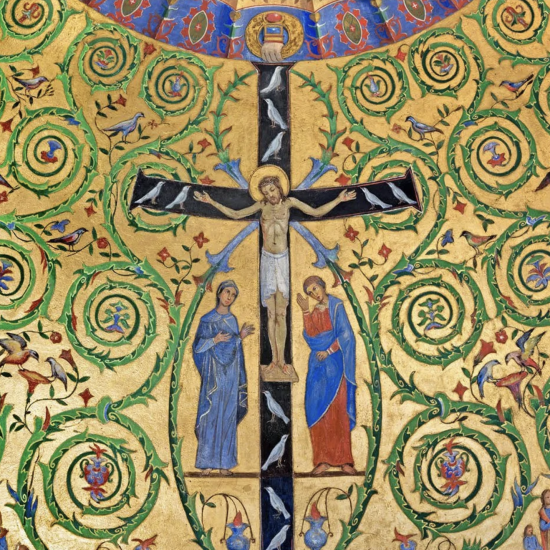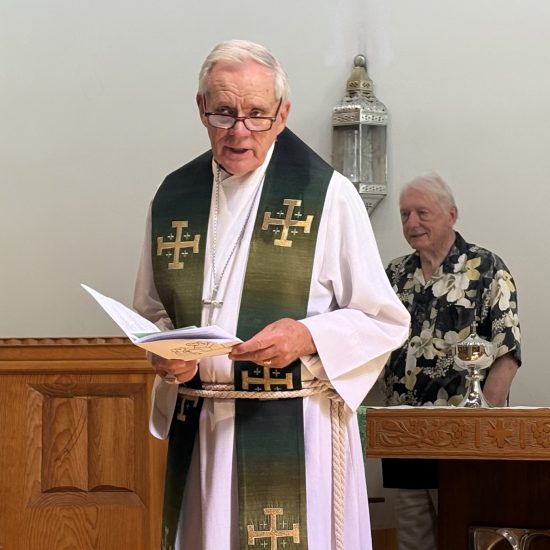

THAT WE MAY BE ONE: Practicing Unity in a Divided Church. By Gary B. Agee. Grand Rapids, MI: Wm. B. Eerdmans Publishing Co., 2022. Xvii + 147 pages.
According to the Gospel of John, on the night before his execution, Jesus spent time in prayer for his followers. He prayed that they would be one, even as he was one with the Father (John 17). Paul placed a high priority on maintaining unity within the communities he founded. He spent significant ink condemning factionalism, insisting that factionalism/division was an act of the flesh and not the Spirit. Nevertheless, the church of Jesus Christ has rarely if ever been truly one. There have been many efforts through the centuries to bring the church together, sometimes through coercion and other times through persuasion. Unfortunately, despite the best efforts of those committed to achieving unity, the number of separate Christian communities continues to grow, perhaps into the thousands. Despite the challenges, there are still those who seek to keep the vision of unity within the body of Christ alive, even if the tide seems to be going against us. For some of us, this pursuit of Christian unity is central to our identity (for my perspective on this see the chapter on ecumenism in my book Called to Bless: Finding Hope by Reclaiming Our Spiritual Roots). We keep the fire burning because we believe this is Jesus’ desire for a church commissioned to be a blessing to the world.

Robert D. Cornwall
Because ecumenism has been for much of my life a central component of my own ministry identity, along with that of my denomination (the Disciples of Christ), I’m always interested in what others have to say about ecumenism (unity). In reading his book That We May Be One, I discovered that Gary Agee shares my passion for unity. In this book, Agee reminds us that unity is not easy to achieve and that shortcuts that avoid difficult conversations about such issues as race and gender won’t lead to true unity.
Agee is a pastor within the Church of God (Anderson, Indiana) and an affiliated faculty member at the denominationally affiliated Anderson University School of Theology and Christian Ministry. Agee tells us that the Church of God has as one of its central tenets the pursuit of unity. While it is Wesleyan and evangelical in orientation, it has similarities to my own Disciples tradition. He suggests that we have two choices as we face the reality that disunity marks life within the body of Christ. We can surrender and “continue shouting at one another over the walls erected out of fear and self-interest.” (p. ix). That does appear to be the choice of the moment, in part because it is a politically powerful position. We’re discovering in the broader culture that polarization works well politically. So why not divide the church, especially along political lines. While that is a popular path, Agee offers what he believes is a more compelling option. You might say this is the road less chosen, but it’s the path he has chosen to embark upon. He has committed himself to work on these “contentious differences and at the same time to learn more grace-filled ways to encounter one another” (p. ix-x). I agree that this second path is the better way and one that Jesus would have us take, but I also know that it’s a more difficult path, especially at this moment. I might add that at a time when many denominations and churches are worried about survival, finding ways of working with others may seem to be nothing more than a distraction. I would disagree, but I understand the sentiment.
Turning to Agee’s book That We May Be One, he has designed this book to be used in personal study and group conversation. Therefore, each chapter includes a brief reflection on the topic at hand as well as questions for discussion, along with what he calls “From Pew to Practice.” In this final piece of each chapter, Agee invites readers/participants to put into actual practice what has been discussed in the chapter/session. Because this is intended to be used in congregational discussion, Agee has made sure that the book is accessible and understandable.
After Agee begins introduces us to the purpose of the book (after a brief preface) by telling us a bit about himself. In this autobiographical introduction, he tells us how he moved from a point in time when he embraced a rather narrow-minded Christianity that involved reading the Bible and little else. The problem wasn’t with reading the Bible, it was the exclusion of other voices that might inform his reading of the bible and broadening his vision of Christianity. Things changed after he went off to college, where he encountered new ideas that stretched his vision. That vision was stretched further when he pursued graduate work at Roman Catholic institutions, something that you wouldn’t expect from an evangelical. This journey eventually led to his taking up a ministry that is marked by a commitment to advocating for unity within the body of Christ. As one might expect, this opening introduction is quite informative and sets the context for the rest of the book.
The chapters that follow introduce the reader to different ways of envisioning unity. Agee’s focus is not on denominational mergers or traditional ecumenical efforts, which usually focus on polity concerns. These are valuable, but not, in his mind, the frontline. He’s more focused on relationships, especially relations that cross ethnic, gender, and cultural boundaries. Thus, he begins by inviting us to envision the diversity within the body of Christ. Then in chapter 2, he moves to define more clearly what unity looks like. While he used the story of Lazarus and the rich man as a scriptural foundation for chapter one to underscore the importance of welcoming everyone at the gate, in chapter two he turns to the prodigal son. While the father’s embrace is an important aspect here, he suggests the passage has other implications. Ultimately, he notes that in the pursuit of unity, we must watch for counterfeit visions of unity that leave us with the status quo and not transformation. As we continue into chapter 3, Agee speaks of the posture of unity. This posture involves humility, listening, introspection, self-awareness, transparency, and a holy curiosity. I like that last quality! These are qualities that enable conversation that covers important differences.
Chapter 4 takes us to an interesting place. It invites us to return to the Upper Room. In other words, it invites us to begin again by letting the Holy Spirit reinvigorate the church so that we might set aside the polarization and attend to the things that divide. Agee has an evangelical orientation that holds the Bible to be the central witness to the Christian faith. As this is a book about unity, he recognizes that there are differences in interpretation when it comes to interpreting Scripture. That has led to a wide variety of positions on issues that concern us. Some seek a message that focuses on promoting peace and justice and equality, while others find texts that foment distrust and anger, which leads to conflict, war, and even genocide. Thus, in chapter five, he insists that we must be careful with how we use Scripture. If we’re going to move toward unity, we’ll need to read Scripture with a lens of inclusion. With that in mind, Agee helps us find that lens. This conversation leads to chapter 6, which is titled “False Gospels.” In this chapter, Agee takes on the messages of division and hate, which do not reflect the message of Jesus, such as the polarizing rhetoric we hear today within the larger Christian community. So, he asks the question many ask, can religion make us better people? The answer should be yes, but in reality, religion doesn’t always make us better people. If we’re to be one, then we must let go of hate-filled messages that don’t reflect Jesus. That means taking care “to promote the gospel of Jesus, a grace-filled message that takes seriously neighbor love.” The message we preach and embody should make us better people and “inspire in us that same border-crossing, boundary-bursting love we find in the New Testament. To settle for less is to embrace a hollowed-out message, a false gospel” (p. 105).
As noted earlier, Agee has a practical concern in mind here—not the typical denominational ecumenical dialogs but more personal effort—and thus the penultimate chapter is titled “Pew to Practice.” While each chapter has a concluding section that offers “pew to practice” suggestions, in chapter 7 he discusses some of the ways in which he has moved from pew to practice while encouraging us to do the same. The eighth and final chapter is titled “Champions for a Cause.” Here is an invitation to become champions for the cause of unity in the body of Christ, a unity that crosses boundaries of race, gender, sexual orientation, and theology so that we might find a path toward embodying Jesus’ prayer for unity. Using the old show and tell model, Agee introduces us to several people who have done just that. In other words, he wants us to know about those who have been champions so we might follow their lead. The stories here feature local leaders committed to unity, not national ones. In other words, this is a call to grassroots work. As someone who has been engaged in these kinds of efforts, it might not bring you glory, but it is rewarding!
For those who believe, as I do, that Christian unity is something worth pursuing, and that it starts at the local, grassroots level, then you will find that Gary Agee has provided a thoughtful, accessible, compelling guide that calls on the church at large to fulfill the prayer of Jesus by pursuing oneness in Christ. So, take and read Agee’s That We May Be One in preparation for moving toward that unity Jesus prayed for and Paul worked diligently for.
This review originally appeared on BobCornwall.com.
Robert D. Cornwall is an ordained minister in the Christian Church (Disciples of Christ). Now retired from his ministry at Central Woodward Christian Church (Disciples of Christ) of Troy, Michigan, he serves as Minister-at-Large in Troy. He holds a Ph.D. in Historical Theology from Fuller Theological Seminary and is the author of numerous books including his latest books: Called to Bless: Finding Hope by Reclaiming Our Spiritual Roots (Cascade Books, 2021) and Unfettered Spirit: Spiritual Gifts for the New Great Awakening, 2nd Edition, (Energion Publications, 2021). His blog Ponderings on a Faith Journey can be found at www.bobcornwall.com.


